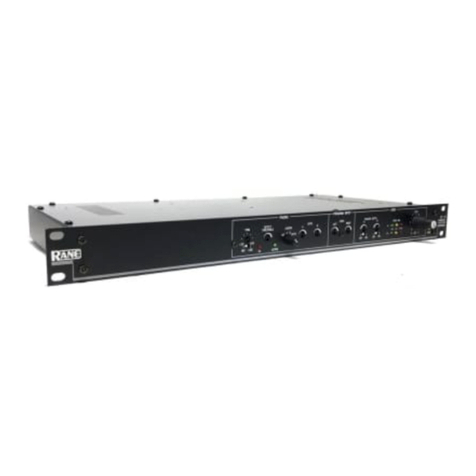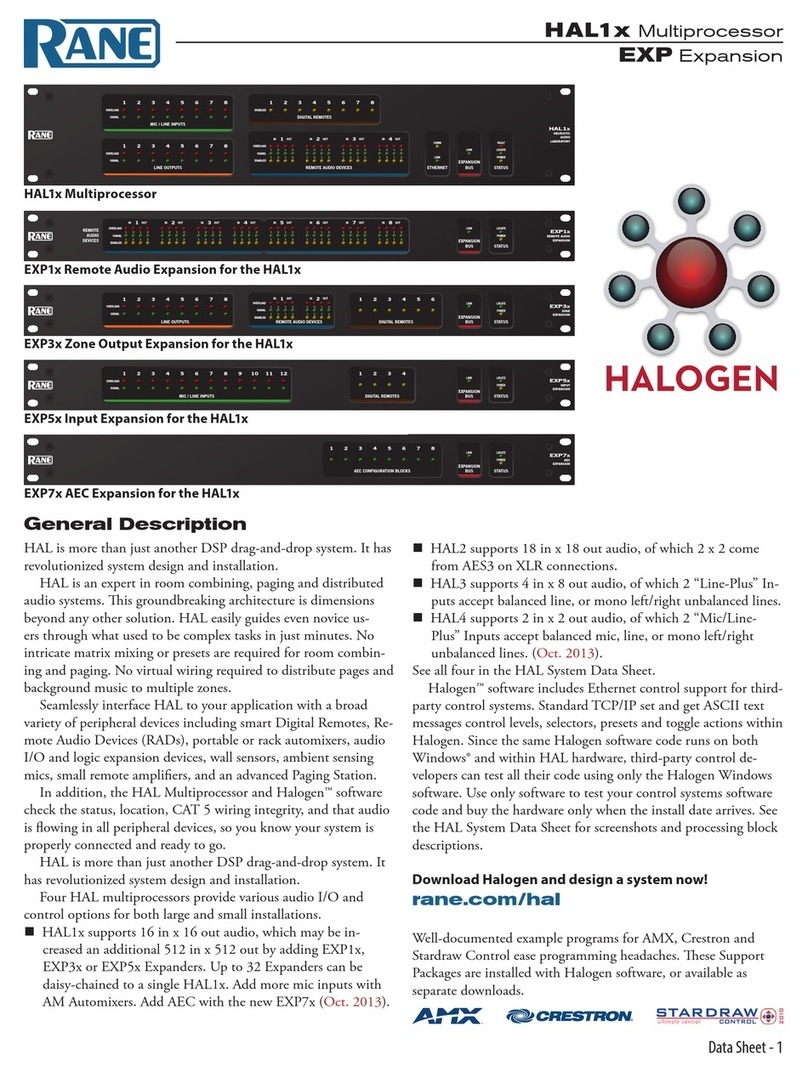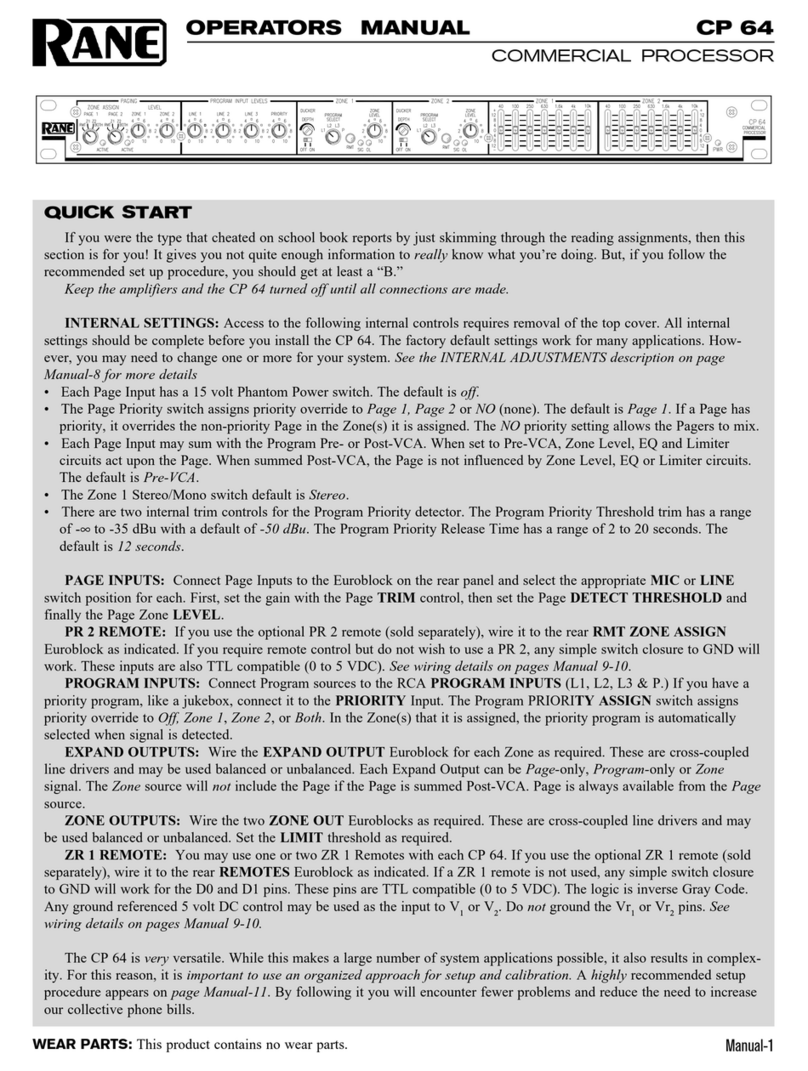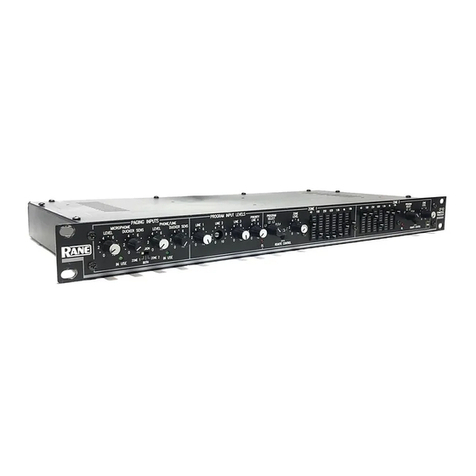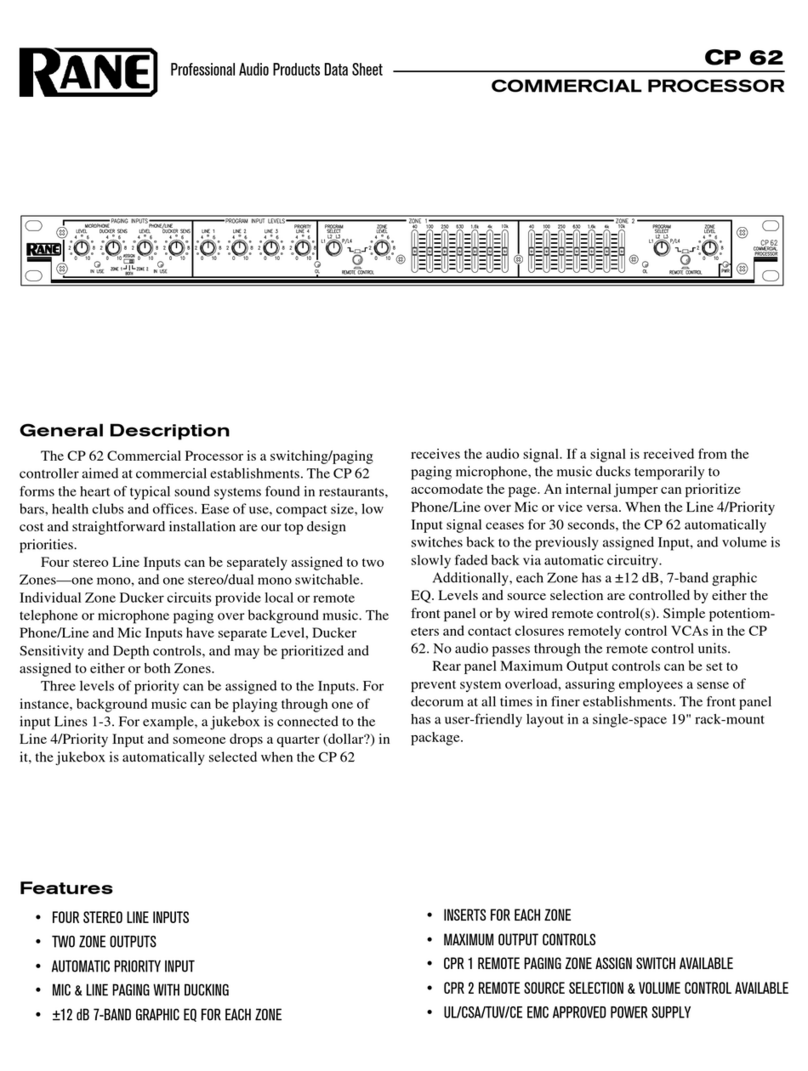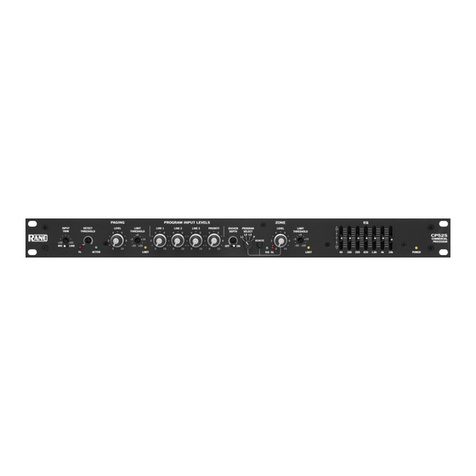
8
CP52S
COMMERCIAL PROCESSOR
ZR1 Remote
e CP52S supports a wired remote for Zone Level and Zone
Source selection. Wire lengths of up to 1000 feet (300 meters) are
possible. A brief list of suitable wire types is provided here in the
Wire Types section.
e ZR1 remote provides Zone Level and Source Selection,
allowing local control from inside the Zone. If only one of the
two controls is used, you may wish to remove the unused knob
and cover the hole with one of the plugs provided in the kit. If
you require one ZR1 remote to control more than one unit, sim-
ply wire the ports in parallel. is may be done with the Selector
only, Level only or both.
Be sure Power to the CP52S is o while all remote connec-
tions are made. It is important to ensure that the CP52S Remote
Port is not subjected to sustained voltages outside the range of 0
to 5 volts DC or high levels of static. Inputs are protected—how-
ever, caution is the better part of... you know. It is a good idea to
install the wiring, connect it to the remote assemblies and then
make the nal connections at the CP52S. Do not short the Vr
pin to ground. Although the pin is current limited, excess heat
will be generated in the 5 volt supply if a short occurs. Never
subject the Vr pin to voltages above 5V.
If a ZR1 remote is not used, any simple switch closure to
GND will work for the D0 and D1 pins. ese pins are TTL
compatible (0 to 5 VDC). e logic is inverse Gray Code. Any
ground referenced 5 volt DC control may be used as the input to
Vc. Do not ground the Vr pin.
Remote Selector Remote Volume
11=LINE 1 2 k pot, reverse-log taper
10=LINE 2 Or any GND referenced 0-5 VDC.
00=LINE 3 Attenuation=64 mV/dB.
01=PRIORITY Range 0V to +5V (0 to -87 dB).
CP52S Connections
All Input and Output connections are made with Euroblock
connectors except for the RCA Program Inputs. When wiring
to Euroblocks, a minimum wire gauge of 22 is preferred for
reliability. If the ground or shield wire is left shorter, it acts as
a strain relief for the other wires. Cable with a exible jacket is
easier to use and less likely to damage the connections. Avoid
stripping excess insulation. Inspect wires for nicks that may lead
to wire breakage. Fully insert each wire in the appropriate socket
and tighten the screw.
e Page Input is a true instrumentation amplier and oper-
ates balanced or unbalanced. Expand and Zone Outputs are
driven by high quality cross-coupled line drivers and operate bal-
anced or unbalanced. Wiring is usually the same for both Inputs
and Outputs. Balanced operation is recommended, and neces-
sary when wire lengths are greater than 10 feet (3 meters). Bal-
anced wiring is logical, (+) to (+), (–) to (–) and shield to shield.
For unbalanced operation, we recommend using two conduc-
tor cable with shield. e cable is wired to the CP52S the same
as for balanced operation. At the other end of the cable, connect
the (+) wire to signal “hot,” and both the (–) and shield wires to
ground (important).
If you use single conductor cable with shield, connect the
shield/gnd wire to both the (–) and shield pins at the CP52S. At
the other end of the cable connect the (+) wire to the signal “hot”
and the shield/gnd wire to ground. When unbalanced wiring is
used, it is very important for the CP52S and any other unit in
the system to have good earth or technical grounds. If a unit is
located more than 10 feet (3 meters) away from the CP52S or
is of a type that might create grounding problems, use isolation
transformers.
When connecting any CP52S Output as unbalanced, use (+)
and ground — leave (–) oating.
Depending on building grounding, an occasional source of
system hum is powering sources and ampliers on dierent elec-
trical circuits. Try connecting everything on the same circuit.
Refer to the included RaneNote, "Sound System Intercon-
nection" on page 17 for more information on proper wiring
procedures.
100-240 V
50/60 Hz 12 WATTS
COMMERCIAL AUDIO
EQUIPMENT 24TJ
R
ALL AUDIO AND REMOTES ARE CLASS 2 WIRING
RANE CORPORATION














